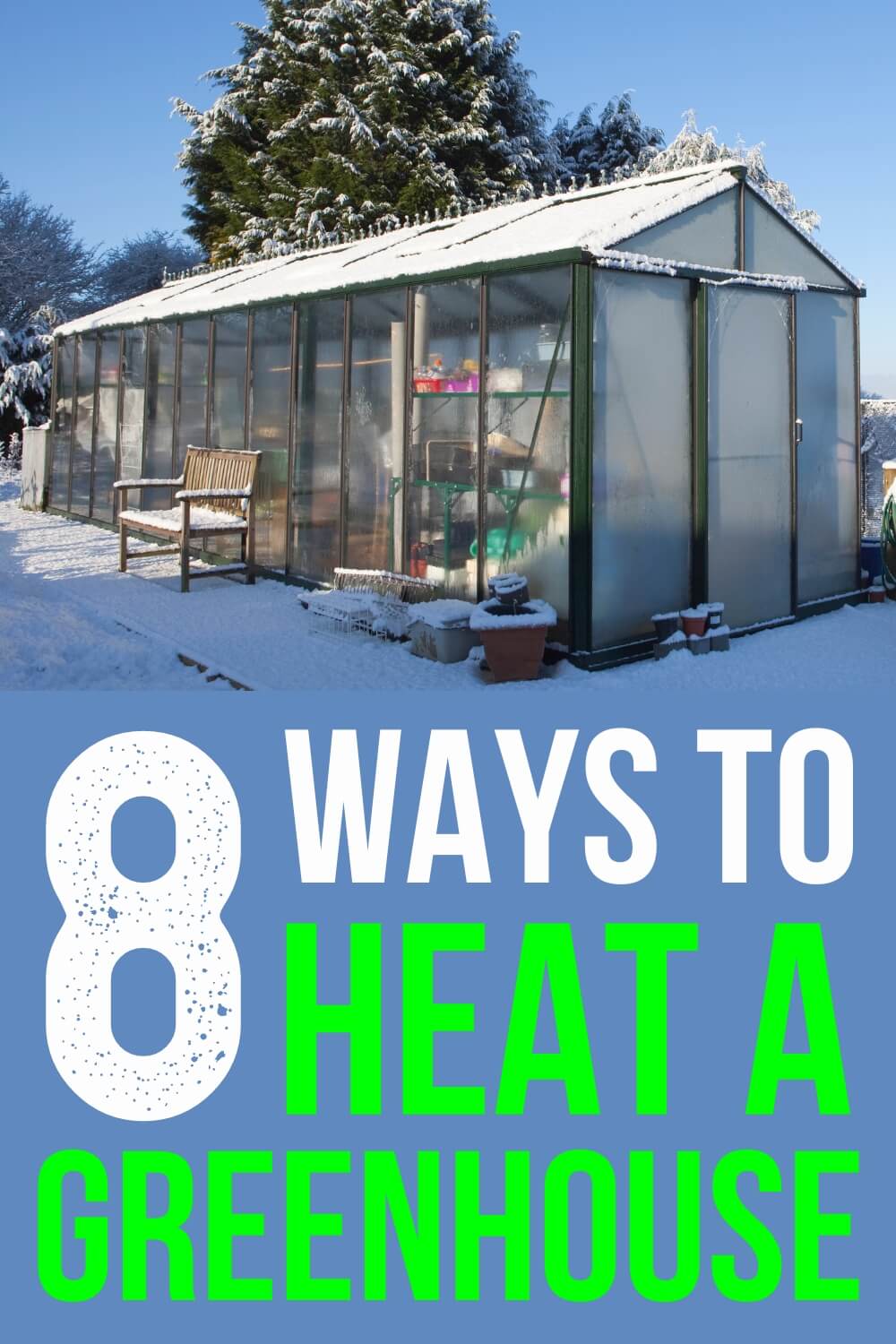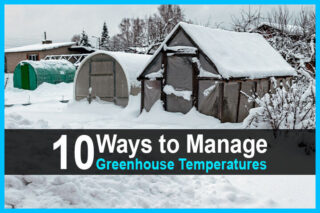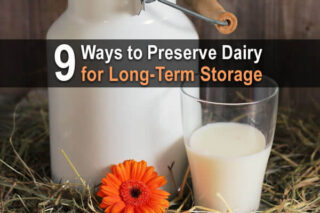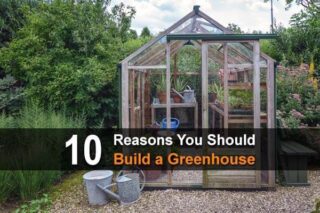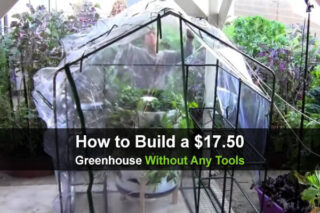Estimated reading time: 7 minutes
Being able to heat a greenhouse is essential for anyone who wants to grow plants year-round, especially in colder climates. By maintaining a stable temperature, you can extend your growing season, protect delicate plants from frost, and ensure a continuous harvest even during winter months.
Whether you’re using a small backyard greenhouse or managing a larger structure, there are several effective ways to keep the inside warm. This guide will walk you through some of the most practical heating solutions, helping you choose the best option for your needs and budget.
Want to Save This Post for Later? Click Here to Pin It On Pinterest!
1. Space Heaters
Space heaters are a popular and effective way to heat a greenhouse. Depending on your setup, you can choose between electric, propane, or natural gas. Electric space heaters can be expensive to run. The size of the greenhouse will determine your best option.
If you’re going to use electric space heaters, it’s a good idea to run wires to the greenhouse so you don't have to use extension cords which can overheat, get unplugged, or get damaged in the weather.
- Electric space heaters are generally the easiest to use and provide a steady heat source. They don’t produce any harmful emissions, making them safe for plants and humans alike. Look for heaters with thermostats and fans to circulate warm air through the greenhouse.
- Propane heaters or natural gas space heaters are the best choice for larger greenhouses. These heaters burn fuel to generate heat, and while they can be more efficient and cost-effective for larger spaces, they do require proper ventilation to avoid carbon monoxide buildup. You should install a carbon monoxide detector to be on the safe side. Some propane models come with oxygen sensors that shut off the heater if oxygen levels drop too low.
When using any kind of space heaters, it’s essential to ensure they are placed away from any flammable materials. The middle of the aisle is your best spot. Set them on timers or use thermostats to avoid overheating the greenhouse.
2. Heat Mats
Heat mats are a gentler heating option often used in combination with other heating methods. The mats are placed under plant trays or seed beds and provide localized warmth to the root zones of plants, which is useful for starting seedlings in cooler conditions.
Heat mats are not going to keep a large greenhouse warm. The roots might be warm, but if your plants are in the blooming season, you’ll need another heating method.
- Seedling heat mats are small mats designed specifically for individual trays of seeds or small plants. They promote faster germination and are great for the first couple of weeks after planting.
- Larger heating mats can be placed directly on the floor or on growing tables to heat larger areas or a group of plants. The mats put out consistent heat without drying out the air around them, which can happen with other types of heaters.
Heat mats are energy efficient. If you want to target specific areas without heating the entire greenhouse, these are a good option.
3. Heating with Thermal Mass
Thermal mass is a more passive heating strategy, relying on certain materials to absorb heat during the day and release it slowly during the night. This method works in cool temperatures, but not great for cold temps. The size of the greenhouse is going to be a big factor.
- Water barrels painted black are commonly used in greenhouses. These barrels absorb the sun’s heat during the day and radiate it back into the greenhouse at night. Put them near plants or along the walls to help stabilize the temperatures. People also use smaller containers, like milk jugs painted black. The jugs should be placed against the walls where they get the most exposure to sunlight and will block the cold from seeping in.
- Stone or brick walls can also be used. They pull the heat from the sun all day and release it after sunset. This method is more of a long-term solution but can be very effective if incorporated during the greenhouse's construction. Use bricks for the flooring and the bottom twelve inches or so of the greenhouse.
The advantage of using thermal mass is that it doesn't require electricity or fuel. A stone floor combined with one of the other heating systems can help reduce dependence on your other heat sources.
4. Solar Heating Systems
Solar heating systems provide a sustainable method for keeping the greenhouse warm. Solar systems work by capturing and storing heat from the sun and then using it to power your electric heater.
- Active solar systems typically involve solar panels that convert sunlight into electrical energy just like you would see on a solar-powered house. If the greenhouse is warm from thermal heat, the solar power can be used to run fans.
- Passive solar systems work similarly to thermal mass by capturing heat from the sun during the day and releasing it slowly as temperatures drop.
A solar heating system can be expensive, but it pays off in the long run with reduced energy bills.
5. Sealing Leaks
No heating system will be efficient if the greenhouse has leaks where cold air can enter. Sealing leaks is one of the simplest but often overlooked steps in building a greenhouse. Yes, you need airflow, but you can control the air with fans or having a vent at one end of the greenhouse.
- Check windows, doors, and seams for any gaps or drafts. Even small leaks can drastically reduce the effectiveness of heating systems, forcing them to work harder and use more energy. Your heat will escape through any crack.
- Weatherstripping can be applied around doors and windows to create a tighter seal and keep the cold air out. Silicone or caulking material can be used to fill in cracks or gaps.
- Double-layer polycarbonate or glass can also help reduce heat loss. Single-pane windows or plastic coverings tend to lose heat more quickly. Yes, they are more expensive, but the investment will save you a lot of money down the road.
Seal it up and reduce the need for constant heating.
6. Adding Insulation
Insulation might seem silly for a greenhouse, but in the winter, you’re no longer relying on the heat from outside. Insulation reduces heat loss and keeps plants warm.
- Bubble wrap is often used to insulate greenhouses. It’s lightweight, easy to install, and provides an extra layer of protection against heat loss. Bubble wrap can be attached to the inside walls or roof of the greenhouse, trapping warm air while still allowing light to pass through. It can be removed in the spring and stored for next winter. If you’re lucky, you can get it for free from businesses that would typically throw it away.
- Foam insulation boards can be added to the north side of a greenhouse. This helps prevent cold air from entering and reflects heat back into the space.
- Thermal curtains or shade cloths placed inside the greenhouse provide extra insulation at night. These curtains are pulled over windows or across the ceiling to create a thermal barrier that retains heat. Again, heat rises. You want to trap as much heat inside by reflecting it back down.
- Insulated foundations help prevent heat from escaping through the ground. Installing a layer of foam insulation or using raised beds can help trap heat around the plant roots.
7. Ground Heating Systems
Ground heating systems or underfloor heating can also be effective for keeping a greenhouse warm. These systems use either electric cables or hot water pipes placed under the flooring to provide even, gentle heat from the ground up.
This tends to be an expensive installation, but radiant heating is quickly growing in popularity.
- Electric underfloor heating consists of heating cables or mats that can be laid under a greenhouse floor. They gently warm the floor, radiating heat upward.
- Hydronic underfloor systems use hot water pumped through tubes under the floor. These are more complex to install but are highly energy-efficient and a great option for big greenhouses.
Ground heating systems are typically installed under flooring materials like thick gravel or pavers, which help trap and radiate the heat using the thermal method.
8. Circulating Air
It’s crucial to maintain proper air circulation to ensure even heat distribution throughout the greenhouse.
- Oscillating fans can help move warm air around the space. Without proper air circulation, certain areas of the greenhouse may stay too hot or cold.
- Ceiling fans are an option for large greenhouses. Proper air movement reduces the risk of mold or mildew, which can thrive in warm, stagnant conditions.
Like this post? Don't Forget to Pin It On Pinterest!
You May Also Like:

